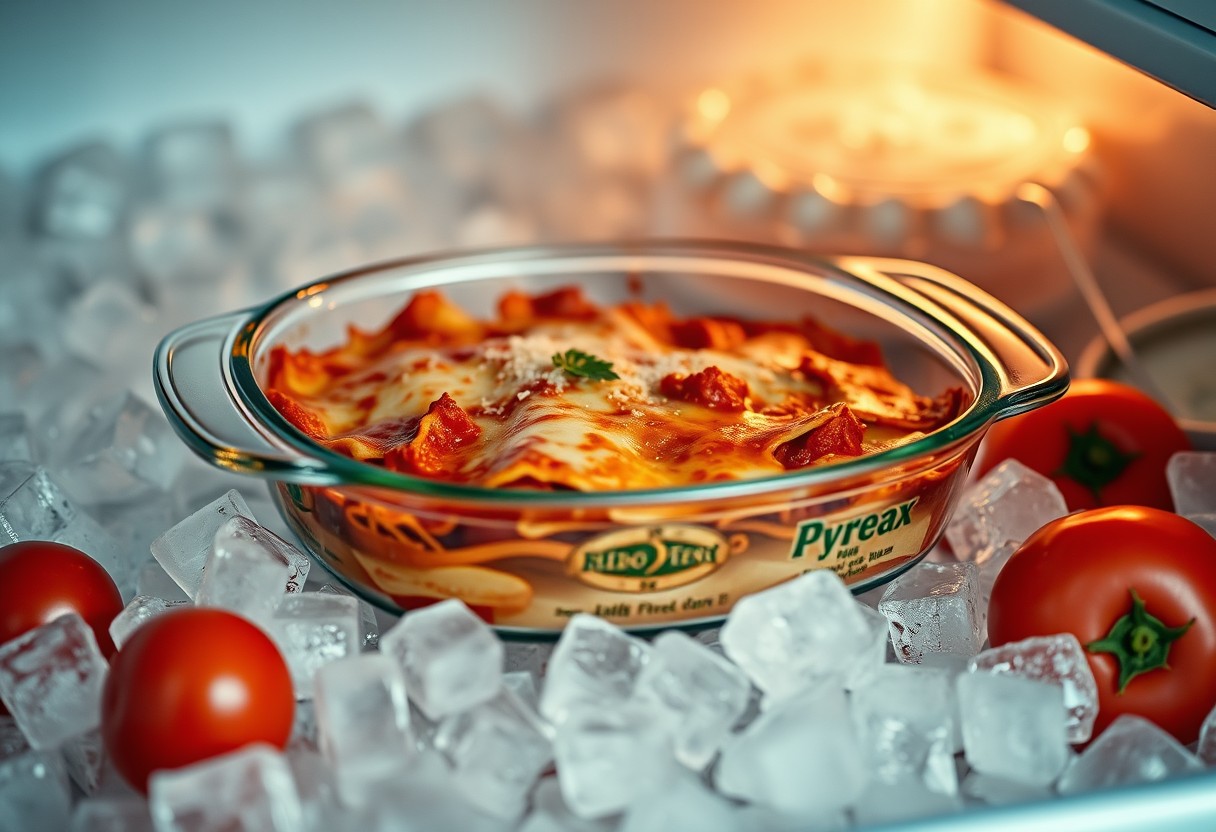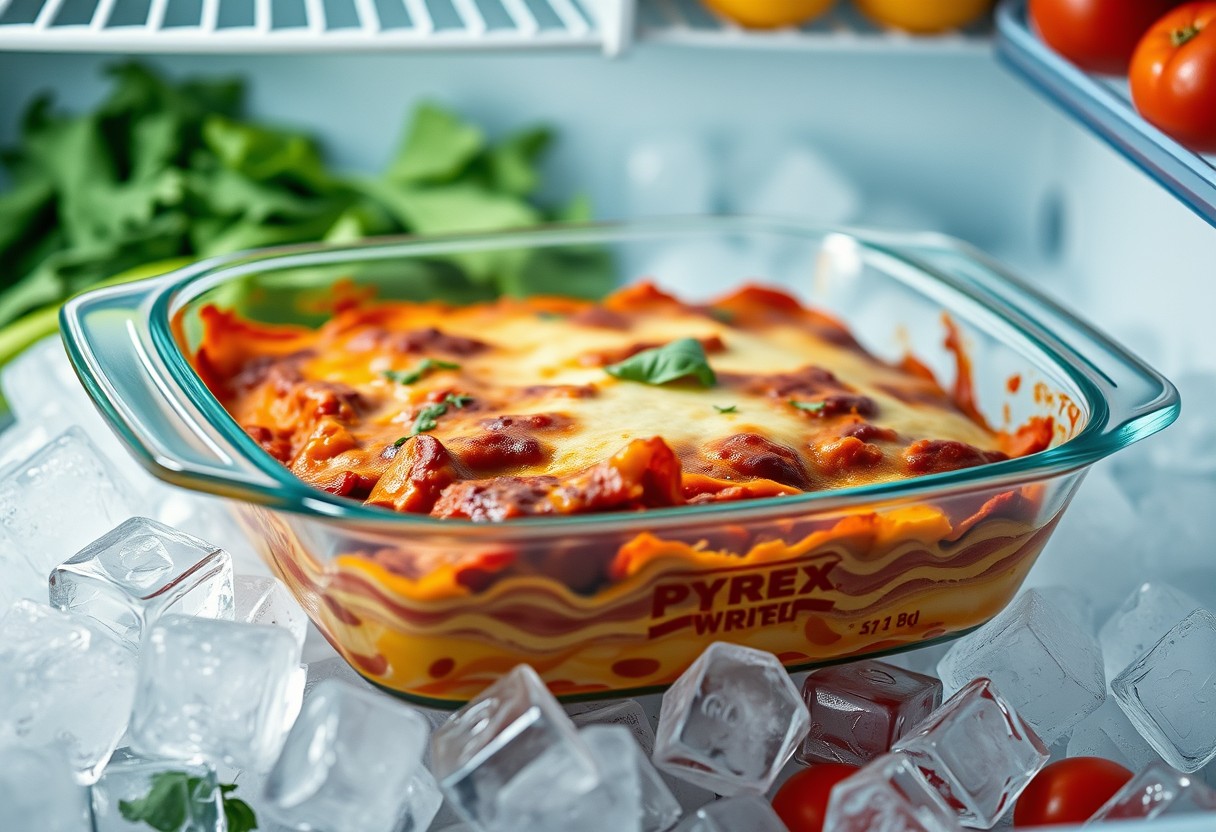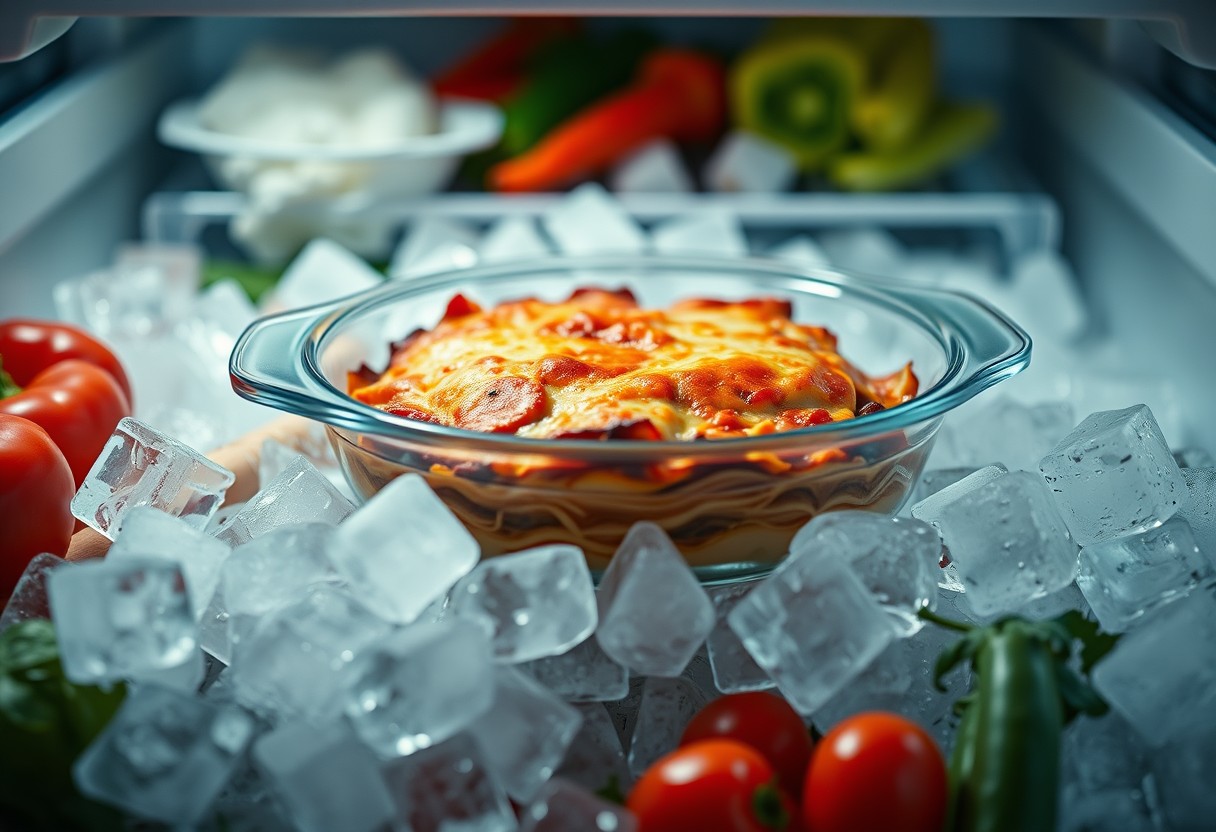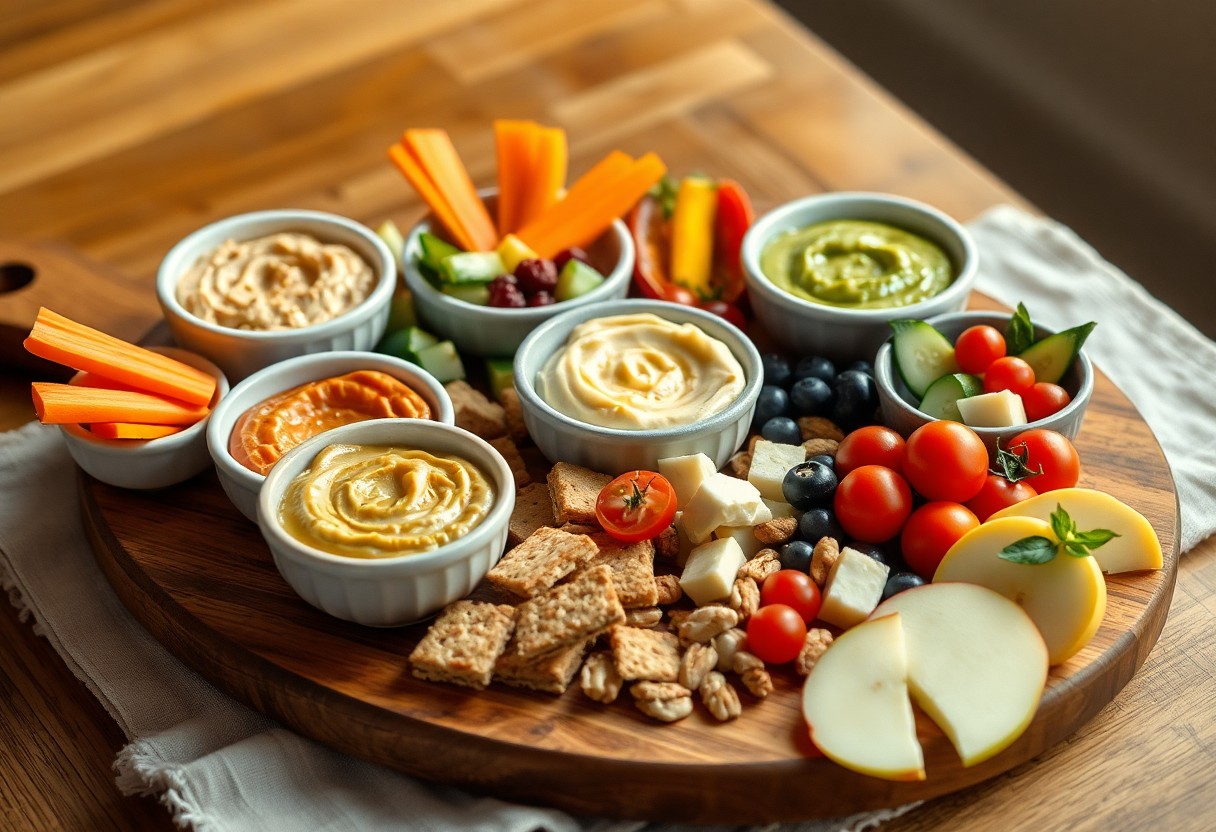Many home cooks wonder if it’s safe to freeze Pyrex dishes, given the need for convenient food storage. You’ll be glad to know that Pyrex glassware is designed to withstand freezing temperatures; however, there are specific guidelines you should follow to prevent breakage. In this post, we’ll explore how to use your Pyrex safely in the freezer, including tips on temperature adjustments and proper usage, ensuring your meals stay fresh without compromising your glassware.

Understanding Pyrex
While Pyrex is often synonymous with durability and versatility in the kitchen, it’s important to understand what sets it apart. Originally designed for use in laboratories, Pyrex is made from tempered glass, which allows it to withstand extreme temperature changes without breaking. This resilience makes it a popular choice for cooking and baking at home, as it can transition smoothly from the oven to the refrigerator.
History of Pyrex
History reveals that Pyrex was introduced by Corning Glass Works in 1915 as a robust solution for laboratory glassware. Its practical applications soon expanded into home kitchens, quickly gaining popularity for its heat resistance and promising durability. Over the decades, Pyrex has evolved in design and functionality, solidifying its reputation as a trusted kitchen staple.
Types of Pyrex Products
Products available in the Pyrex range cater to various cooking needs. Here are some popular categories:
| Product Type | Description |
| Baking Dishes | Ideal for casseroles and dessert recipes. |
| Mixing Bowls | Versatile for mixing, serving, and storage. |
| Measuring Cups | Essential for accurate ingredient measurements. |
| Storage Containers | Perfect for leftovers and meal prep. |
| Ramekins | Great for single-serving dishes and baking. |
Knowing the range of Pyrex products can help you select the right items for your cooking needs, whether you’re baking a cake or prepping meals for the week ahead.
This versatility extends beyond the standard offerings. Pyrex also incorporates innovative designs catered to modern cooking trends:
| Innovative Product | Features |
| Steamers | Facilitates healthy cooking methods. |
| Microwave Dishes | Designed specifically for microwave use. |
| Colanders | Ideal for rinsing fruits and vegetables. |
| Casserole Covers | Enhances storage and transport options. |
| Baking Mats | Offers a non-stick surface for baking. |
Knowing about these additional Pyrex items allows you to make informed choices when enhancing your kitchen collection for diverse culinary experiences.
Freezing with Pyrex
There’s no denying the convenience of using Pyrex for freezing food. With its durable glass construction, Pyrex containers are an excellent option for safely storing prepped meals, leftovers, or even batch-cooked recipes in your freezer.
Can You Freeze Pyrex?
On the whole, yes, you can freeze Pyrex. This type of glassware is designed to withstand extreme temperature changes, making it suitable for the freezer as long as you follow a few guidelines for proper usage.
Safety Considerations
The key to safely freezing Pyrex lies in understanding its limits. While the glass is designed to handle cold temperatures, sudden changes can still lead to breakage.
Considerations for optimal use include allowing your food to cool before placing it in the freezer and avoiding thermal shock by not exposing the glass to extreme temperature changes quickly. For example, don’t transfer a Pyrex dish directly from the oven to the freezer. Additionally, ensure that you leave some headspace in the container for the food to expand as it freezes. By following these precautions, you can safely enjoy the versatility of your Pyrex for freezing without worry.
Best Practices for Freezing Pyrex
Some key practices can help you effectively freeze Pyrex without compromising its integrity. Always ensure your dish is at room temperature before placing it in the freezer to avoid thermal shock. Use freezer-safe lids or wraps to prevent moisture from affecting your food. Label your containers with the contents and date to help keep track of what you have stored, and never stack heavy items on top of freezing Pyrex to prevent breakage.
Preparing Pyrex for Freezing
To prepare your Pyrex for freezing, make sure to allow it to cool completely before you place it in the freezer. Pre-freeze any food items to ensure they don’t stick to the Pyrex surface. If you plan to freeze liquids, leave some space at the top of the container to accommodate expansion, and consider using a non-abrasive cover to seal it properly.
Thawing and Reheating Pyrex
Pyrex glass dishes should not be subjected to sudden changes in temperature. When reheating your frozen Pyrex, transfer it from the freezer to the refrigerator for several hours or overnight to thaw gradually. Alternatively, you can place it in a bowl of cold water for faster thawing.
The gradual thawing process helps avoid thermal shock, which can cause the glass to crack or shatter. Once thawed, you can reheat the Pyrex in the oven or microwave, but always start at a lower temperature before increasing it. This ensures an even heating process, protecting the dish and ensuring your food is safe to eat.
Common Misconceptions
Many people believe that all glass containers can be safely frozen without consequences. This is a significant misconception, particularly when it comes to Pyrex. While Pyrex is designed to withstand temperature changes, there are important guidelines you should follow to ensure your glassware remains intact throughout the freezing process.
Myths about Pyrex and Freezing
Freezing Pyrex containers is often thought to be safe without any consideration for the contents. Many assume that as long as the dish is made of Pyrex, it will not shatter or crack in the freezer. However, this is not entirely accurate, as improper techniques or certain food types can contribute to breakage.
Clarifying Misunderstandings
About the freezing capabilities of Pyrex, it’s vital to recognize that while the material is sturdy, it does have its limitations. If you freeze liquids filled to the brim or place hot dishes into the freezer immediately, you risk thermal shock. Understanding these factors can help you preserve your glassware’s integrity.
Myths surrounding Pyrex and freezing often stem from a lack of awareness of how temperature changes affect glass. Pyrex is designed to endure thermal shifts; however, this does not mean it is invincible. By ensuring you leave enough room for expansion when freezing liquids and avoiding drastic temperature changes, you can help prevent any mishaps. Understanding these truths will empower you to safely use your Pyrex in the freezer without fear of damage.

Troubleshooting Freezing Pyrex
All Pyrex glassware is designed to withstand temperature changes, but sometimes accidents happen. If you experience any issues when freezing your Pyrex, there are troubleshooting tips to help you understand and prevent future problems. Always handle your glassware with care, avoid drastic temperature shifts, and ensure that your containers are not overfilled to minimize the risk of cracking. Paying close attention to the rules of usage will keep your Pyrex in optimal condition for all your freezing needs.
What to Do if It Cracks
What happens if your Pyrex cracks while in the freezer? First, it’s important to ensure your safety; if the glass is broken, dispose of it properly to avoid injury. If the crack is minor and the piece is still usable, consider using it for non-food storage. However, it’s generally best to replace cracked Pyrex to maintain safe and efficient cooking practices.
Signs of Damage
An important part of maintaining your Pyrex is recognizing the signs of damage. If you notice chips, deep scratches, or a visible crack in the glass, these may compromise the container’s integrity. Additionally, if you see any discoloration or warping, it’s a sign that the glass may no longer be safe to use for food storage or cooking.
Signs of damage include visible cracks or chips, which can develop over time due to repeated temperature changes or mishandling. If your Pyrex has developed a cloudy appearance or has lost its shine, it may indicate wear and tear that can affect its performance. Always inspect your glassware before use; if you notice any of these concerning signs, it’s wise to replace the damaged items to ensure safe cooking and food storage practices.
Alternatives to Pyrex for Freezing
After considering the limitations of Pyrex for freezing, you might explore alternatives that better withstand extreme temperatures. Options like silicone, stainless steel, and heavy-duty plastic containers provide durability and flexibility, ensuring your food remains safe during freezing. These materials often feature airtight seals that help prevent freezer burn and maintain freshness, making them suitable substitutes in your kitchen.
Other Container Options
Options such as glass storage containers, silicone bags, and freezer-safe plastics are excellent substitutes for Pyrex. While glass can be heavy, it is great for high-end storage and heating. Silicone bags and containers are lightweight and versatile, and freezer-safe plastic options come in a variety of sizes, providing practical solutions for your freezing needs.
Comparing Material Safety
On a crucial note, understanding the safety of materials you choose for freezing is necessary to ensure your food’s integrity. Below is a comparison of various materials used for freezing:
Comparing Material Safety
| Material | Safety Features |
|---|---|
| Glass | Non-toxic, microwave and dishwasher safe, but can break if frozen improperly. |
| Silicone | Flexible, reusable, and free of BPA; withstands extreme temperatures. |
| Plastic (Freezer-Safe) | Durable and lightweight but may contain harmful chemicals if non-BPA. |
Another necessary consideration is the long-term implications of using various materials. Let’s compare them further:
Long-term Safety Comparisons
| Material | Long-term Use Concerns |
|---|---|
| Glass | Can shatter and needs careful handling, ideal for long-term storage if cared for. |
| Silicone | Highly durable and resistant to wear but may stain over time from certain foods. |
| Plastic (Freezer-Safe) | May warp or leach chemicals over time; choose high-quality options for better safety. |
Conclusion
Considering all points, you can indeed freeze Pyrex, but it is crucial to follow specific guidelines to ensure the integrity of your glassware. Always allow your Pyrex to cool to room temperature before placing it in the freezer, and avoid sudden temperature changes to prevent breakage. By understanding your Pyrex’s limitations and utilizing proper freezing techniques, you can safely store your meals without compromising your valuable cookware.





Leave a Reply